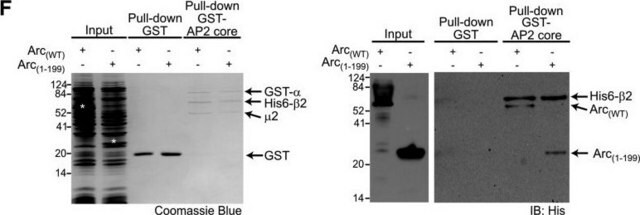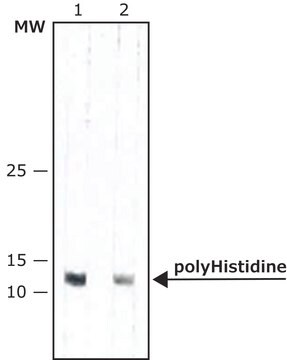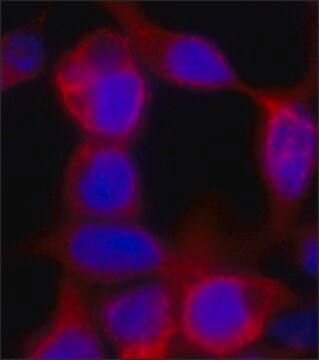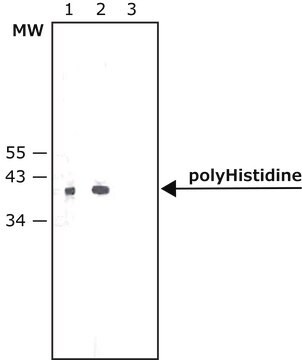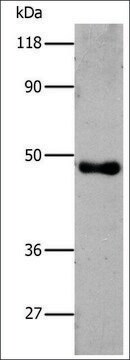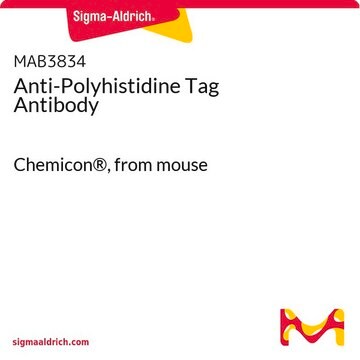Wichtige Dokumente
A5713
Monoklonaler Anti-polyhistidin-Antikörper
clone HIS-1, purified immunoglobulin, PBS suspension, suitable for purification of HIS tagged recombinant proteins
Synonym(e):
Monoklonales 6-His-Epitop-Tag, Monoklonales 6xHis-Tag, Monoklonales HHHHHH-Epitop-Tag, Monoklonales Hexahistidin-Tag, Monoklonales His-Tag, Monoklonales His6-Tag, Monoklonales Histidin-Tag, Monoklonales Polyhistidin-Tag
About This Item
Empfohlene Produkte
Biologische Quelle
mouse
Qualitätsniveau
Konjugat
agarose conjugate
Antikörperform
purified immunoglobulin
Antikörper-Produkttyp
primary antibodies
Klon
HIS-1, monoclonal
Form
PBS suspension
Isotyp
IgG2a
Kapazität
15-30 nmol/mL binding capacity
Eignung
suitable for purification of HIS tagged recombinant proteins
Versandbedingung
wet ice
Lagertemp.
2-8°C
Posttranslationale Modifikation Target
unmodified
Suchen Sie nach ähnlichen Produkten? Aufrufen Leitfaden zum Produktvergleich
Allgemeine Beschreibung
Spezifität
Immunogen
Anwendung
Western Blotting (1 paper)
Physikalische Form
Angaben zur Herstellung
Rechtliche Hinweise
Sie haben nicht das passende Produkt gefunden?
Probieren Sie unser Produkt-Auswahlhilfe. aus.
Lagerklassenschlüssel
10 - Combustible liquids
WGK
WGK 1
Flammpunkt (°F)
Not applicable
Flammpunkt (°C)
Not applicable
Hier finden Sie alle aktuellen Versionen:
Besitzen Sie dieses Produkt bereits?
In der Dokumentenbibliothek finden Sie die Dokumentation zu den Produkten, die Sie kürzlich erworben haben.
Unser Team von Wissenschaftlern verfügt über Erfahrung in allen Forschungsbereichen einschließlich Life Science, Materialwissenschaften, chemischer Synthese, Chromatographie, Analytik und vielen mehr..
Setzen Sie sich mit dem technischen Dienst in Verbindung.